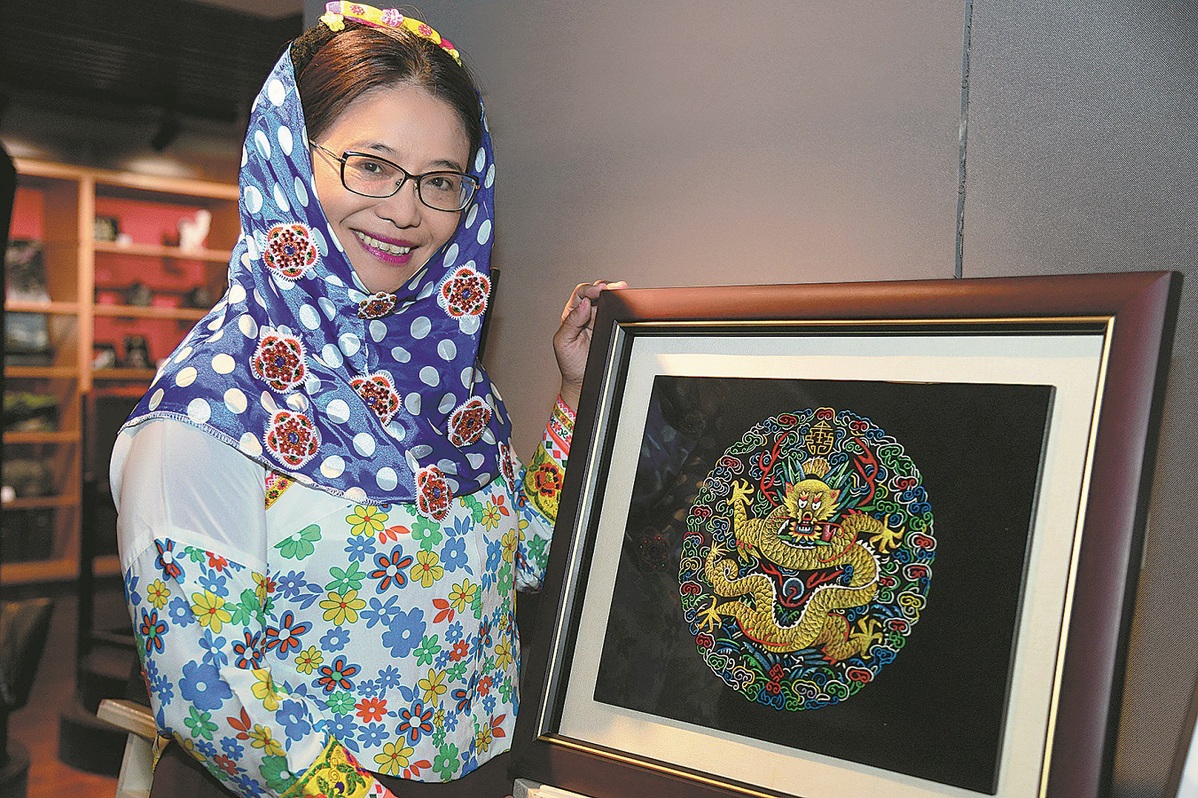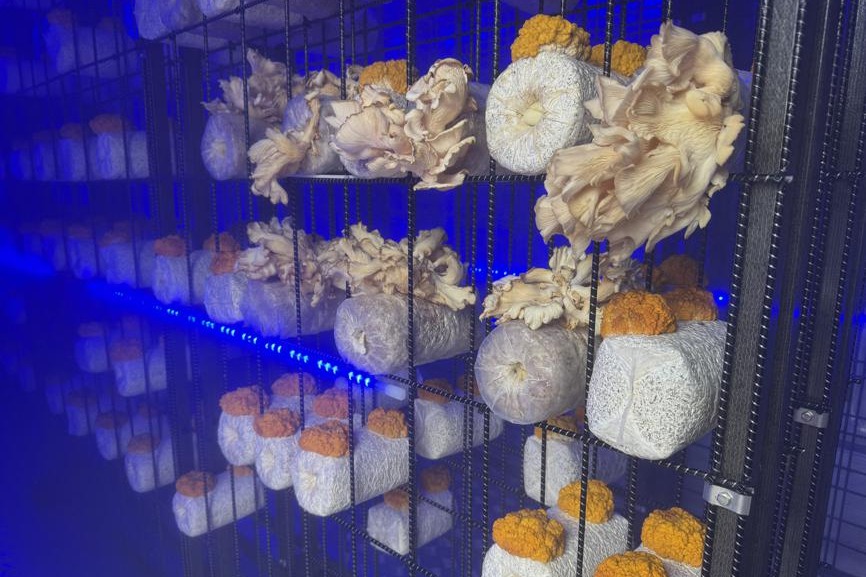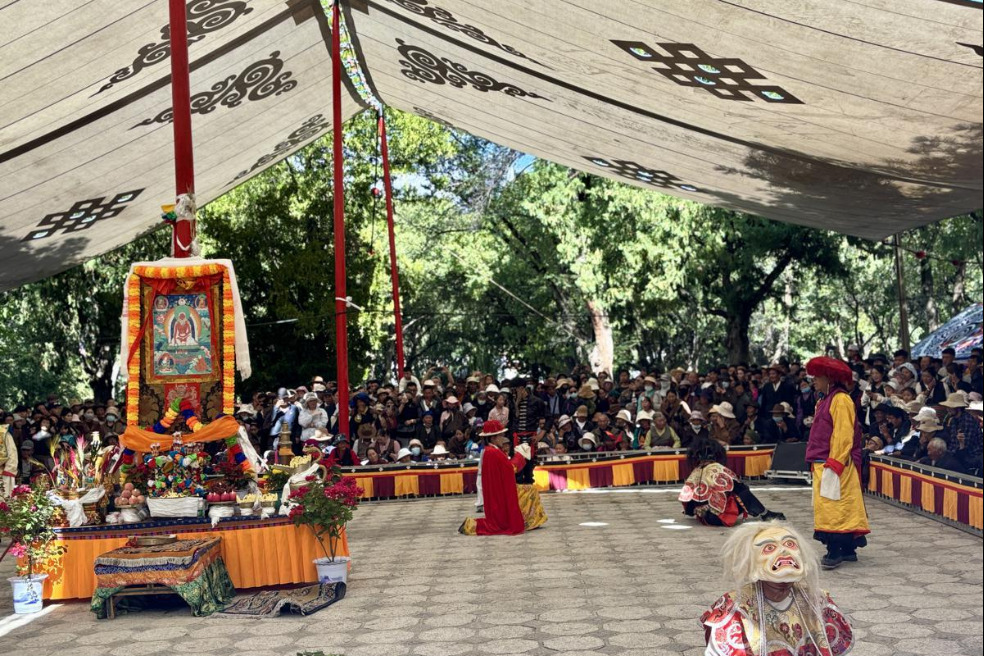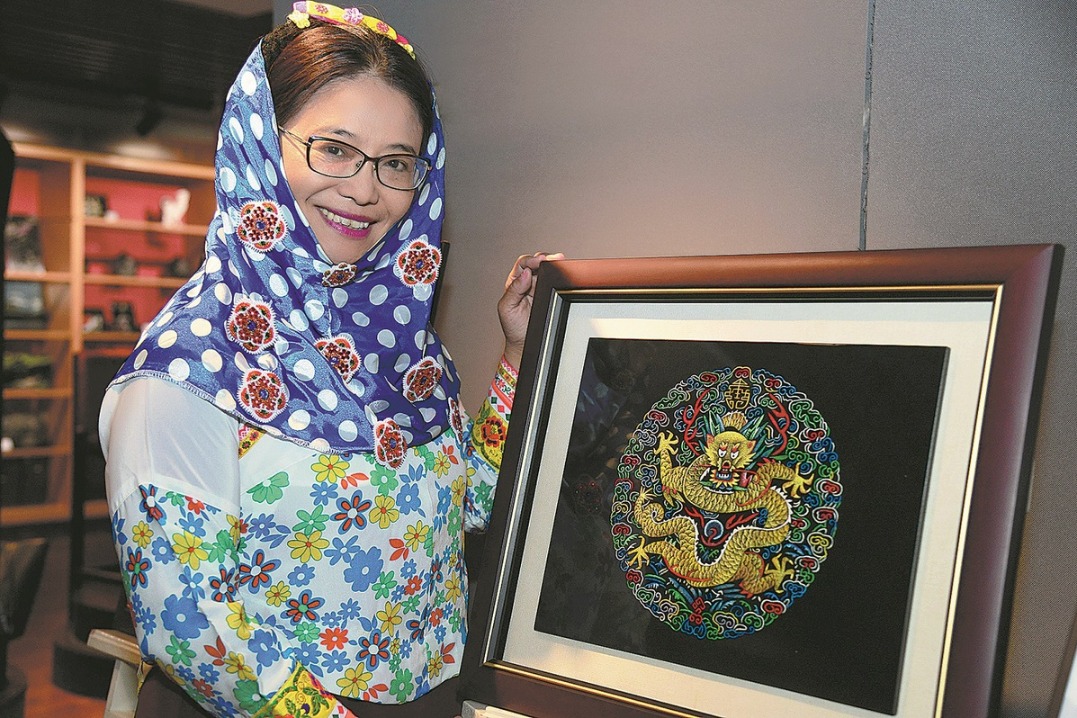Artist transforms stones into golden opportunities


At first glance, a work of art called Twelve Beauties appears to be a painting, but a closer look reveals it's a vivid work crafted through precisely placed dots on a piece of stone. The breathtaking artwork, on display at Huihe Stone Cultural Park in Xiamen, Fujian province, is a prime example of an intricate craft known as Huian shadow carving.
The artist behind the piece is 58-year-old Li Yahua, the 16th-generation inheritor of the art form, which uses black-and-white shading to create detailed images on stone with special needle-like alloy steel tools. Created in 1994, it took Li about a year to complete the piece, tapping around 1.2 billion points onto the stone.
The art form, originating from Huian county in Fujian, has a history of more than 300 years and has been passed down through generations. Li began her apprenticeship as a teenager with her father, Li Zousheng, who helped craft the reliefs on the Monument to the People's Heroes in Beijing's Tian'anmen Square.
Li recalled her father's strict demeanor as he corrected her when her mind wandered.
"It was his sternness that instilled in me the essence of stone carving: calmness, dedication and concentration — a spirit that has endured in Chinese stone carving," she said.
Li mastered various stone carving techniques and developed a more delicate style known as Huihe shadow carving. In 1988, a piece she created sold for nearly 5,000 yuan ($699), which motivated her to devote herself to the craft.
"Traditional stone carving is made in three-dimensional forms, while shadow carving is like painting on stone with dots," Li explained.
The craft requires artists to stay highly focused while skillfully applying wrist strength to adjust the density and depth of the dots. The significant strain on her wrist and eyesight led to medical problems for Li. When she was 29, Twelve Beauties became the last piece she completed on her own.
In the 1990s, traditional industries faced challenges from the widespread adoption of machinery. Stone carvers worked harder for meager incomes, and urbanization and market stagnation threatened the survival of Huian shadow carving techniques.
With a keen sense of the market, Li began to transform her approach. She integrated traditional carving techniques with innovative applications such as the restoration of ancient buildings and the creation of themed landscapes.
In 2008, she established Huihe Stone Cultural Park to promote and protect Huihe shadow carving. Since then, her team has undertaken various projects, including restoring ancient buildings, landscaping gardens, creating sculptures, installing stone wall decorations and setting up exhibitions.
In addition to preserving the culture, Li has expanded the art form's influence by taking on apprentices and integrating the art with cultural exchange, tourism and leisure activities. Her initiatives have been vital in safeguarding the techniques and revitalizing the industry.
The park has nurtured the younger generation's interest through educational activities. On May 18, in celebration of International Museum Day, a family tour themed around stone carving attracted more than 3,000 participants.
Li's team has also incorporated works into everyday essentials, creating products such as tea sets and incense holders. They've also added color to the traditionally black-and-white art form, transcending its monochromatic origins. Many people have commissioned her team to customize wedding photos using shadow carving.
"It is only when stone carving becomes an integral part of daily life that this craft can truly endure," Li said.
In 2019, Li's son Dai Yian chose to join her after graduating from college. Li said she's lucky because "many craftsmen struggle to pass their skills to the younger generation."
Born in 1996, Dai has embraced the traditional craft while incorporating contemporary elements. His innovative tea saucers featuring Chinese zodiac animals have been popular, with more than 20,000 units sold.
In 2021, Huian shadow carving was recognized as a national intangible cultural heritage. Dai has since become the 17th-generation inheritor of Huihe shadow carving.
Li's team has experimented with features that appeal to younger audiences. Shadow carvings of popular cartoon characters such as Nezha and Sun Wukong have proven popular.
To further promote the techniques, Li and her team have turned to new media and livestreaming platforms.
"We have great products, and we need to promote our stories and traditional Chinese culture," she said.
Gao Yuxin and Zheng Yang contributed to this story.
- Artist transforms stones into golden opportunities
- University students find spirit as schools mark war anniversary
- China launches low Earth orbit satellite group
- Concerns raised after deadly amoebae kill kids
- Debate on selling pets to pay debts swirls after court tried to auction cat
- Pioneering green tech eyes space application, industry boost




































